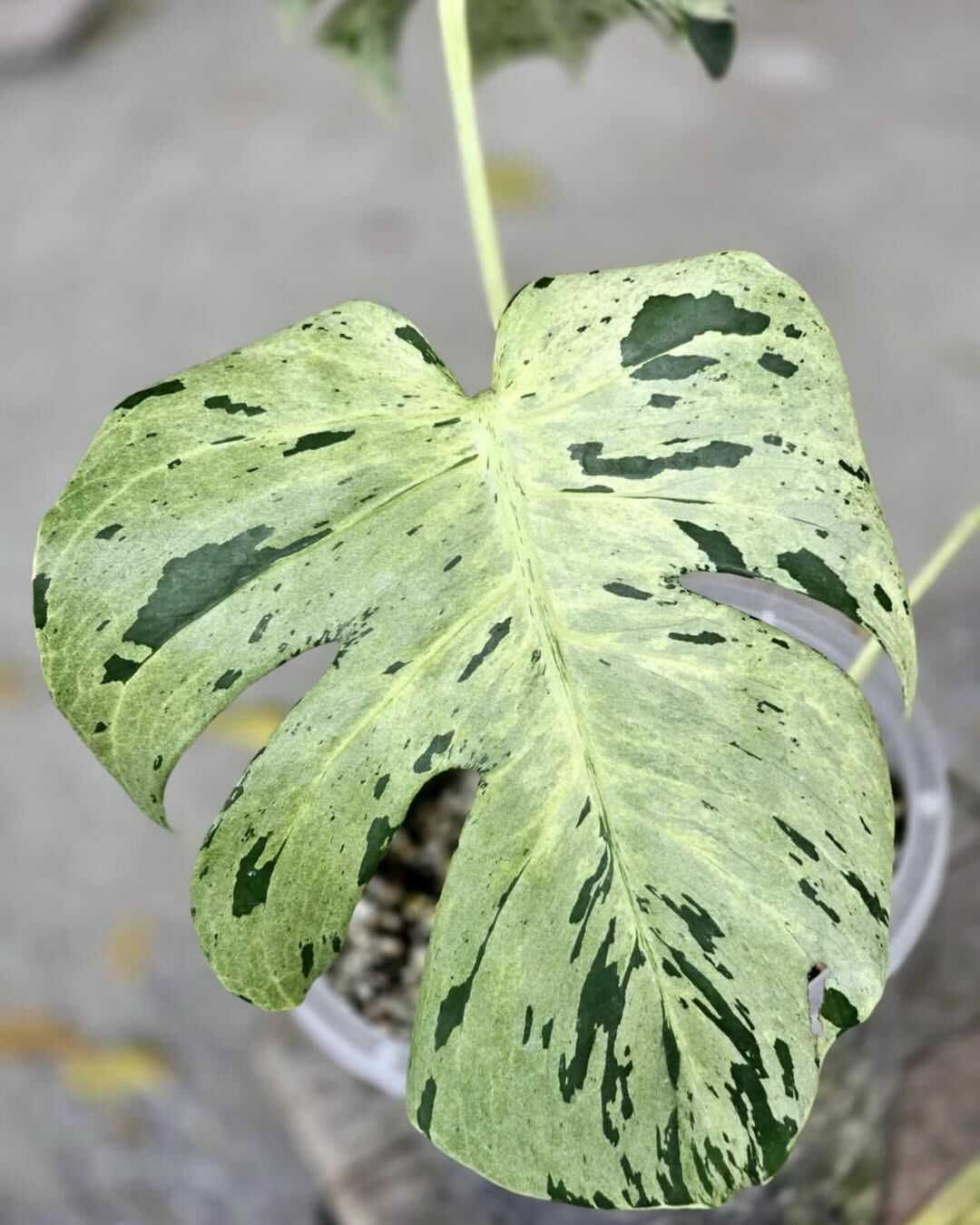Monstera plants are beloved for their large, glossy leaves and tropical charm, but what happens when those leaves start drooping? Understanding why your Monstera’s leaves are drooping is key to keeping your plant healthy and vibrant. Drooping leaves often signal an underlying issue, ranging from watering mistakes to environmental stress.
This article explores common causes behind droopy Monstera leaves, including improper watering, light conditions, and pests. By identifying these factors, you can take effective steps to restore your Monstera’s vitality and enjoy its lush foliage once again.

Understanding Monstera’s Growth and Drooping Behavior
Natural Growth Patterns of Monstera
Monstera plants naturally grow large, heavy leaves that can sometimes droop due to their own weight. This is especially true for mature plants with expansive foliage. The drooping may not always indicate a problem; it can be part of their natural growth cycle as the leaves stretch toward light sources.
Causes of Drooping Leaves
Several factors influence whether Monstera leaves droop unnaturally. Key causes include:
- Water Stress: Both overwatering and underwatering affect turgor pressure in leaf cells, leading to droopiness.
- Lighting Conditions: Insufficient or excessive light can weaken the plant’s structure, causing leaves to sag.
- Humidity and Temperature: Low humidity or sudden temperature fluctuations can stress the plant, resulting in droopy leaves.
Signs That Drooping Is a Problem
To distinguish natural drooping from stress, observe other symptoms such as yellowing leaves, browning edges, or wilting stems. Consistent drooping paired with these signs often signals a need for care adjustments to promote healthy growth and leaf strength.
The Role of Watering Issues in Monstera Drooping
How Overwatering Affects Monstera Leaves
Overwatering is one of the most common reasons why Monstera leaves droop. When the soil remains too wet, the roots can suffocate and begin to rot, preventing the plant from absorbing necessary nutrients and oxygen. This lack of root health reduces turgor pressure, causing leaves to wilt and droop. Symptoms often include yellowing leaves along with drooping, signaling root distress.
Underwatering and Leaf Drooping
Conversely, underwatering leads to dehydration in Monstera plants. Without enough moisture, cells lose rigidity, and leaves begin to sag. The soil will typically feel dry several inches below the surface. Unlike overwatering, underwatering causes crisp, dry leaf edges and sometimes browning tips, combined with the droopiness.
Best Watering Practices for Healthy Leaves
- Water when the top 1-2 inches of soil feel dry.
- Use well-draining soil to prevent waterlogging.
- Ensure pots have drainage holes to avoid standing water.
- Adjust watering frequency based on seasonal changes and indoor humidity.
Maintaining balanced watering is crucial to preventing drooping and promoting vigorous Monstera growth.
How Light Conditions Can Lead to Drooping Leaves
Insufficient Light and Its Effects
Monstera plants thrive in bright, indirect light, and lack of adequate lighting can cause their leaves to droop. When exposed to low light, the plant struggles to photosynthesize efficiently, leading to weakened stems and limp leaves. Prolonged insufficient light may also result in slow growth and smaller, paler leaves, which are more prone to drooping.
Impact of Excessive Direct Sunlight
While Monstera enjoys bright light, too much direct sunlight can scorch its leaves, causing them to droop and develop brown patches or crispy edges. Intense sun exposure stresses the plant by increasing water loss through leaf transpiration, which can quickly lead to dehydration and drooping.
Optimizing Light for Your Monstera
- Place the plant near east or north-facing windows for gentle morning light.
- Use sheer curtains to diffuse harsh sunlight.
- Rotate the plant regularly to ensure even light distribution.
- Consider supplemental grow lights if natural light is insufficient, especially in winter months.
Proper light management helps maintain strong stems and vibrant leaves, reducing the chances of drooping caused by light stress.
Pests and Diseases that Cause Monstera’s Leaves to Droop
Common Pests Affecting Monstera
Pests like spider mites, mealybugs, and scale insects can stress your Monstera, causing leaves to droop. These tiny insects feed on plant sap, weakening the leaves and stems. Spider mites leave fine webbing, while mealybugs appear as white cottony clusters. Infestations reduce the plant’s ability to absorb nutrients, resulting in limp, droopy foliage.
Diseases Leading to Drooping Leaves
Fungal and bacterial diseases also contribute to drooping. Root rot, often caused by overwatering and poor drainage, severely damages roots, restricting water uptake and causing wilting. Leaf spot diseases create discolored patches that weaken the leaf’s structure, leading to drooping and eventual leaf drop if untreated.
Managing Pests and Diseases Effectively
- Regularly inspect your plant for signs of pests or unusual spots.
- Use insecticidal soap or neem oil to treat infestations early.
- Ensure proper watering and well-draining soil to prevent root rot.
- Remove affected leaves promptly to stop disease spread.
Early detection and consistent care can save your Monstera from drooping caused by pests and diseases.
How Soil and Drainage Affect Monstera’s Leaves
Importance of Well-Draining Soil
Monstera plants need soil that retains moisture but drains excess water quickly. Poor drainage leads to waterlogged roots, causing root rot—a major reason for drooping leaves. Soil that’s too dense or compacted can suffocate roots, restricting oxygen flow essential for healthy growth. A well-aerated soil mix helps maintain the right balance of moisture and air around roots.
Ideal Soil Composition for Monstera
The best soil for Monstera includes:
- Peat moss or coco coir for moisture retention
- Perlite or orchid bark to improve aeration and drainage
- Compost or organic matter for nutrients
This combination ensures roots stay moist but not soggy, supporting leaf turgidity and overall plant vigor.
Drainage Tips to Prevent Drooping
- Use pots with drainage holes to allow excess water to escape.
- Avoid saucers filled with standing water.
- Repot every 1-2 years to refresh soil and prevent compaction.
- Monitor soil moisture regularly with a moisture meter or finger test.
Good soil and drainage are fundamental to preventing drooping caused by root and water stress in Monstera plants.
The Impact of Temperature and Humidity on Monstera Drooping
Temperature Preferences of Monstera
Monstera plants thrive in temperatures between 65°F and 85°F (18°C to 29°C). Exposure to temperatures below 50°F (10°C) can cause stress, resulting in drooping leaves. Sudden temperature changes or drafts from air conditioners and heaters also shock the plant, leading to weakened stems and limp foliage.
Role of Humidity in Leaf Health
High humidity levels of 60% or more mimic Monstera’s natural tropical environment, promoting healthy, firm leaves. Low humidity dries out leaf cells, causing droopiness, curling, or browning edges. Indoor heating or dry air during winter months can drastically reduce humidity, stressing the plant.
Maintaining Optimal Temperature and Humidity
- Keep Monstera away from cold drafts and heating vents.
- Use a humidifier or pebble tray with water to boost humidity.
- Group plants together to create a microenvironment with higher moisture.
- Regular misting can temporarily improve leaf hydration but isn’t a substitute for consistent humidity control.
Stable temperatures and adequate humidity help maintain leaf turgor, preventing drooping caused by environmental stress.
Repotting Stress and Its Effects on Monstera Leaves
Why Repotting Can Stress Monstera
Repotting is essential for Monstera growth but can temporarily stress the plant. Disturbing the root system during repotting may cause root damage or shock, reducing the plant’s ability to absorb water and nutrients. This stress often results in drooping leaves as the plant adjusts to its new environment.
Signs of Repotting Stress
- Leaves droop or wilt shortly after repotting.
- Yellowing or browning edges may appear.
- Growth slows down temporarily as the plant redirects energy to root recovery.
These symptoms usually resolve within a few weeks if proper care is given.
Minimizing Repotting Stress
- Choose a pot slightly larger (1-2 inches wider) than the current one.
- Use fresh, well-draining soil suited for Monstera.
- Water the plant thoroughly after repotting but avoid waterlogging.
- Keep the plant in stable light and temperature conditions to encourage recovery.
With careful handling and proper aftercare, Monstera plants can bounce back from repotting stress, restoring healthy, upright leaves.
Nutrient Deficiency and Drooping Leaves
Common Nutrient Deficiencies in Monstera
Monstera plants require essential nutrients like nitrogen, potassium, magnesium, and calcium for strong leaf development. Deficiencies in these nutrients can weaken the plant’s structure, causing leaves to droop. For example, nitrogen deficiency often leads to pale, droopy leaves, while a lack of potassium can cause yellowing edges and poor turgor.
How Deficiencies Affect Leaf Health
Nutrient shortages reduce the plant’s ability to maintain cell rigidity, leading to wilting and drooping. Deficiencies also slow growth and make Monstera more susceptible to disease and environmental stress. Signs such as leaf discoloration, spotting, and curling often accompany drooping due to poor nutrition.
Addressing Nutrient Deficiency
- Use a balanced, water-soluble fertilizer formulated for tropical houseplants.
- Apply fertilizer every 4-6 weeks during the growing season (spring and summer).
- Incorporate slow-release fertilizers for steady nutrient supply.
- Ensure proper watering and soil conditions to maximize nutrient uptake.
Correcting nutrient imbalances promotes strong, upright leaves and overall Monstera health.
Final Thoughts
Understanding the reasons behind your Monstera’s drooping leaves is crucial for effective care. From watering habits to light, pests, and soil conditions, each factor plays a vital role in maintaining healthy foliage. Paying attention to environmental needs and promptly addressing issues will help your Monstera thrive. Consistent care and observation are the keys to keeping your tropical friend lush, vibrant, and upright.

I’m Shofi, a passionate gardener and blogger. I have 10+ years of experience in gardening and hold certifications in horticulture and garden design. I share my knowledge and skills through my garden blog to inspire and educate others on the joys of gardening. I try to provide valuable information and create a community for gardeners of all levels to connect and learn. My ultimate goal is to inspire others to start their own gardens and connect with nature.

